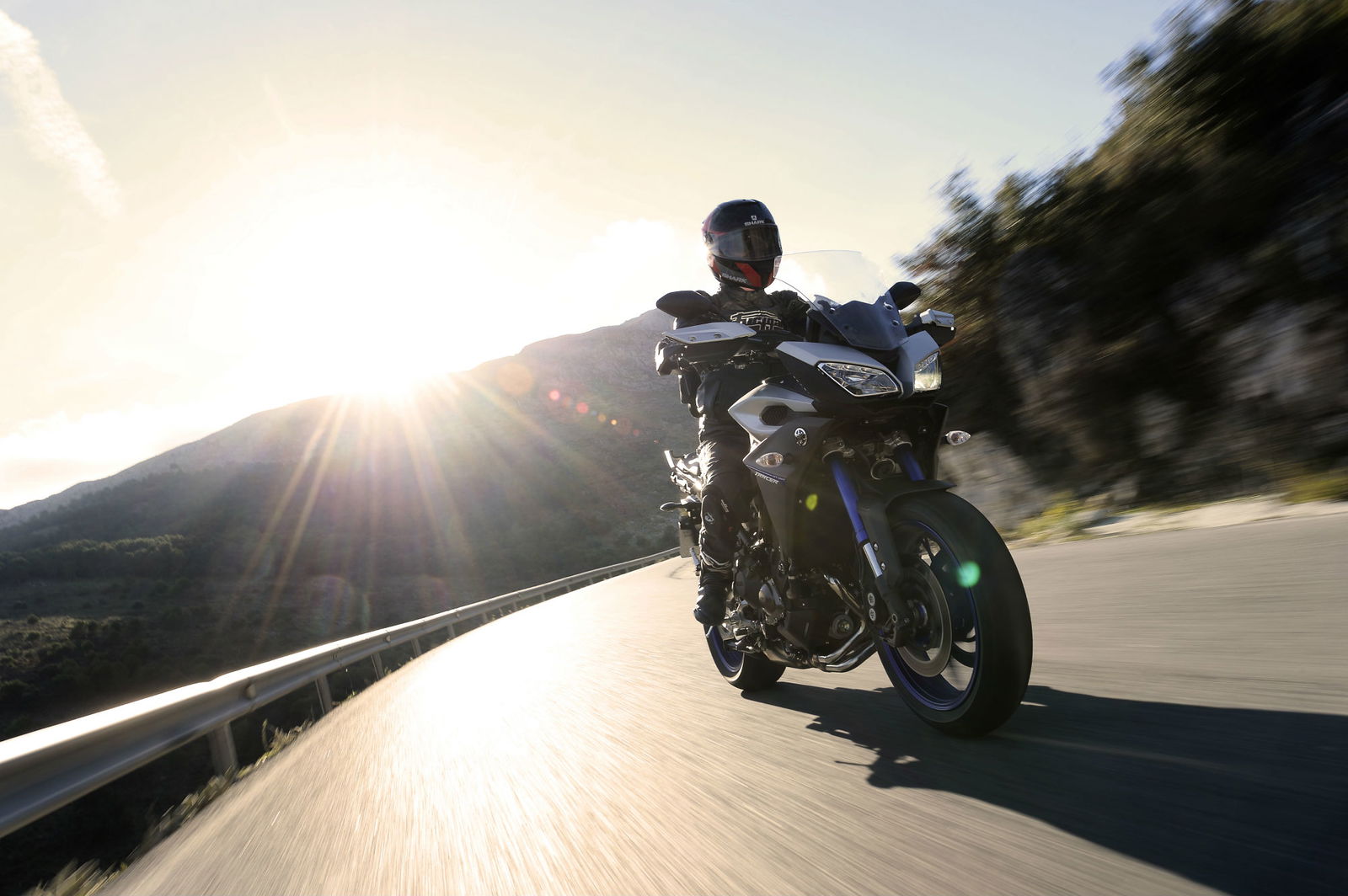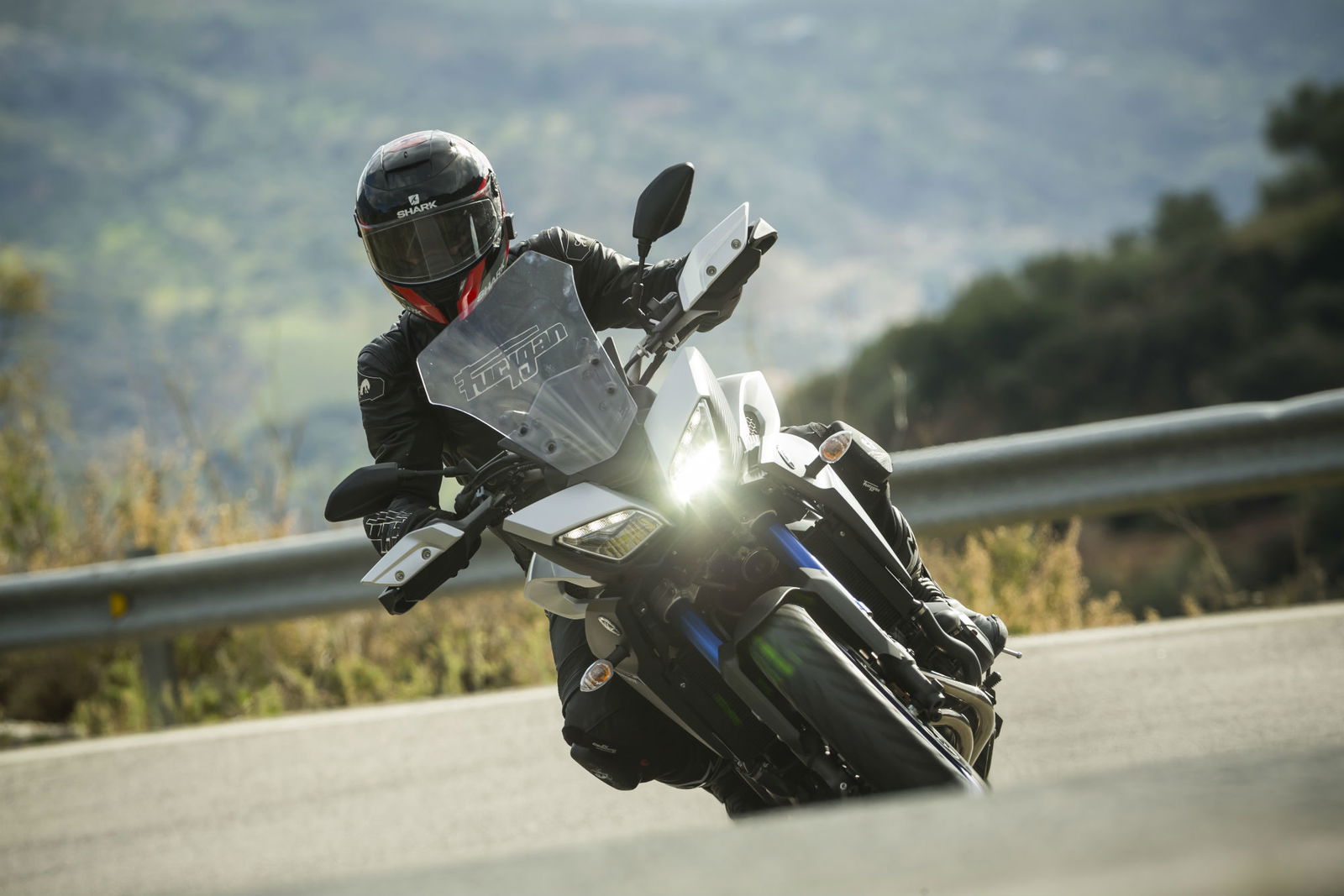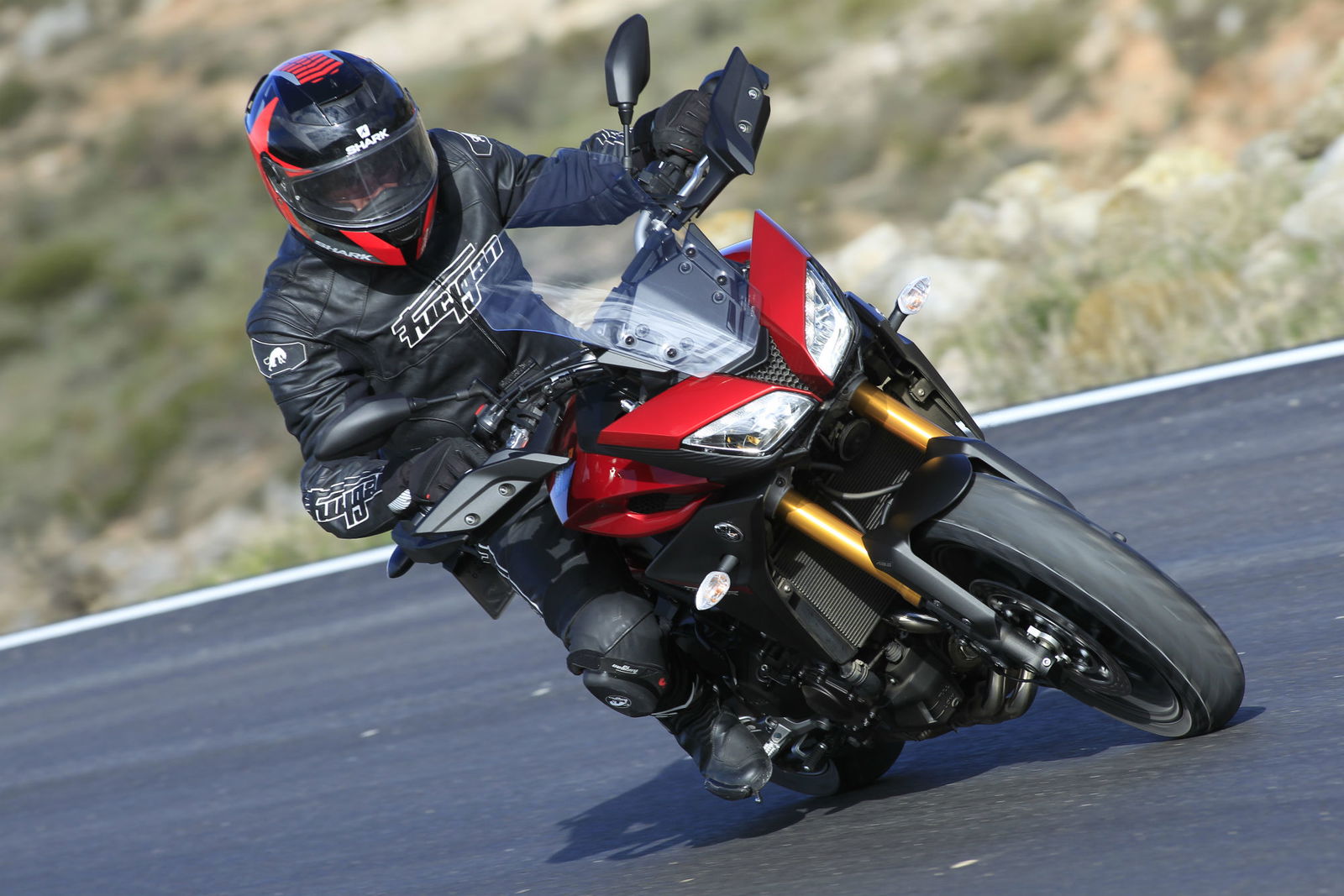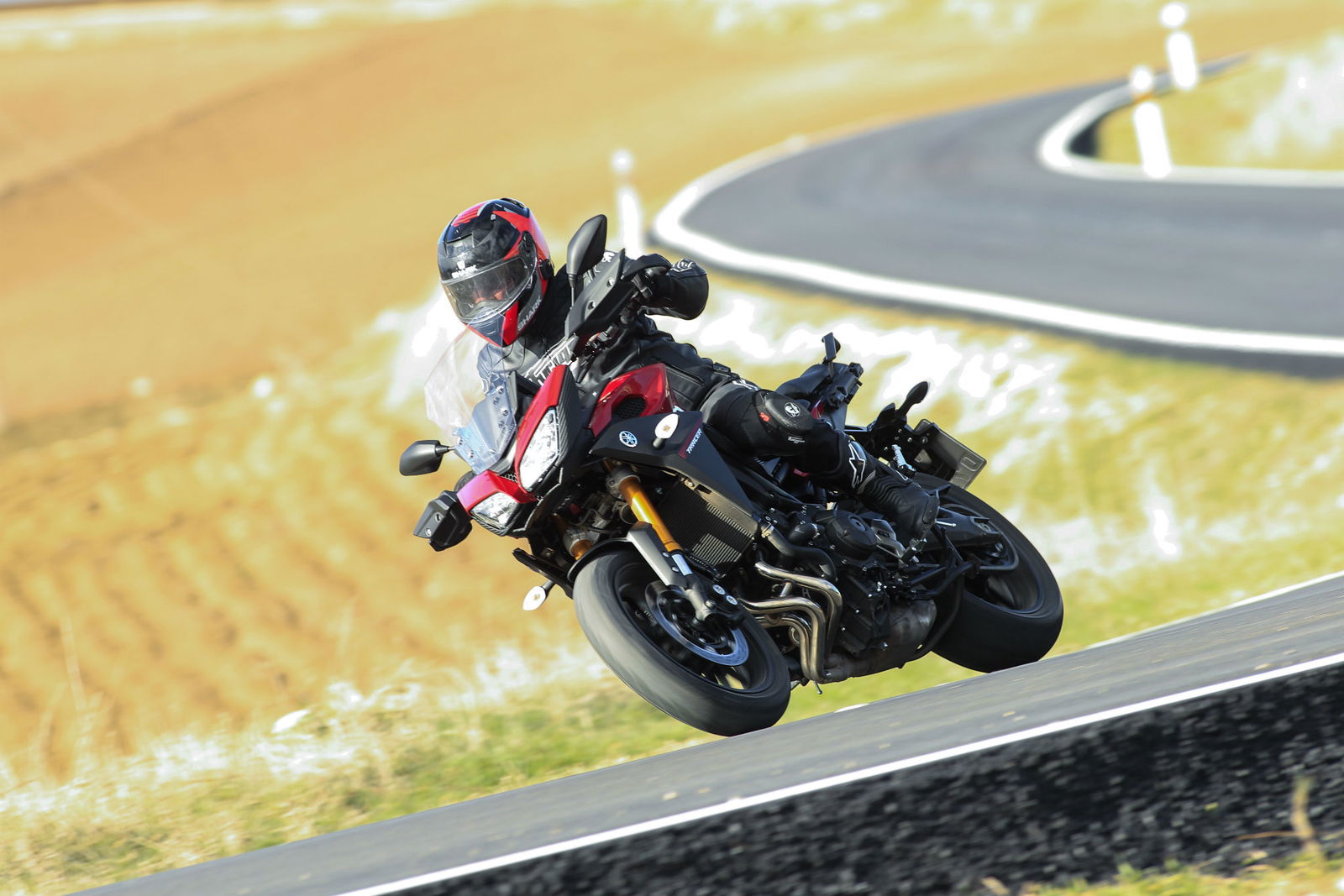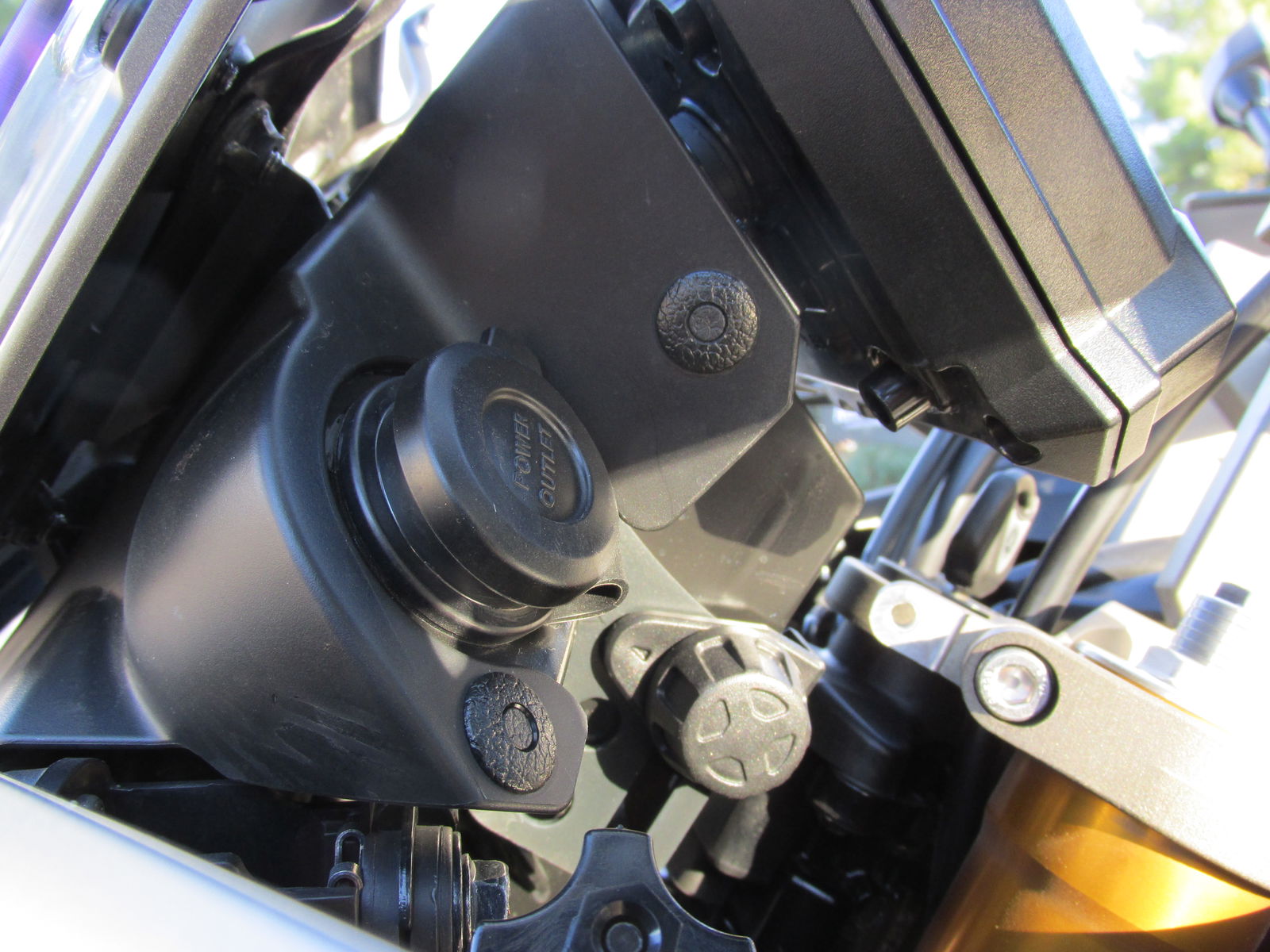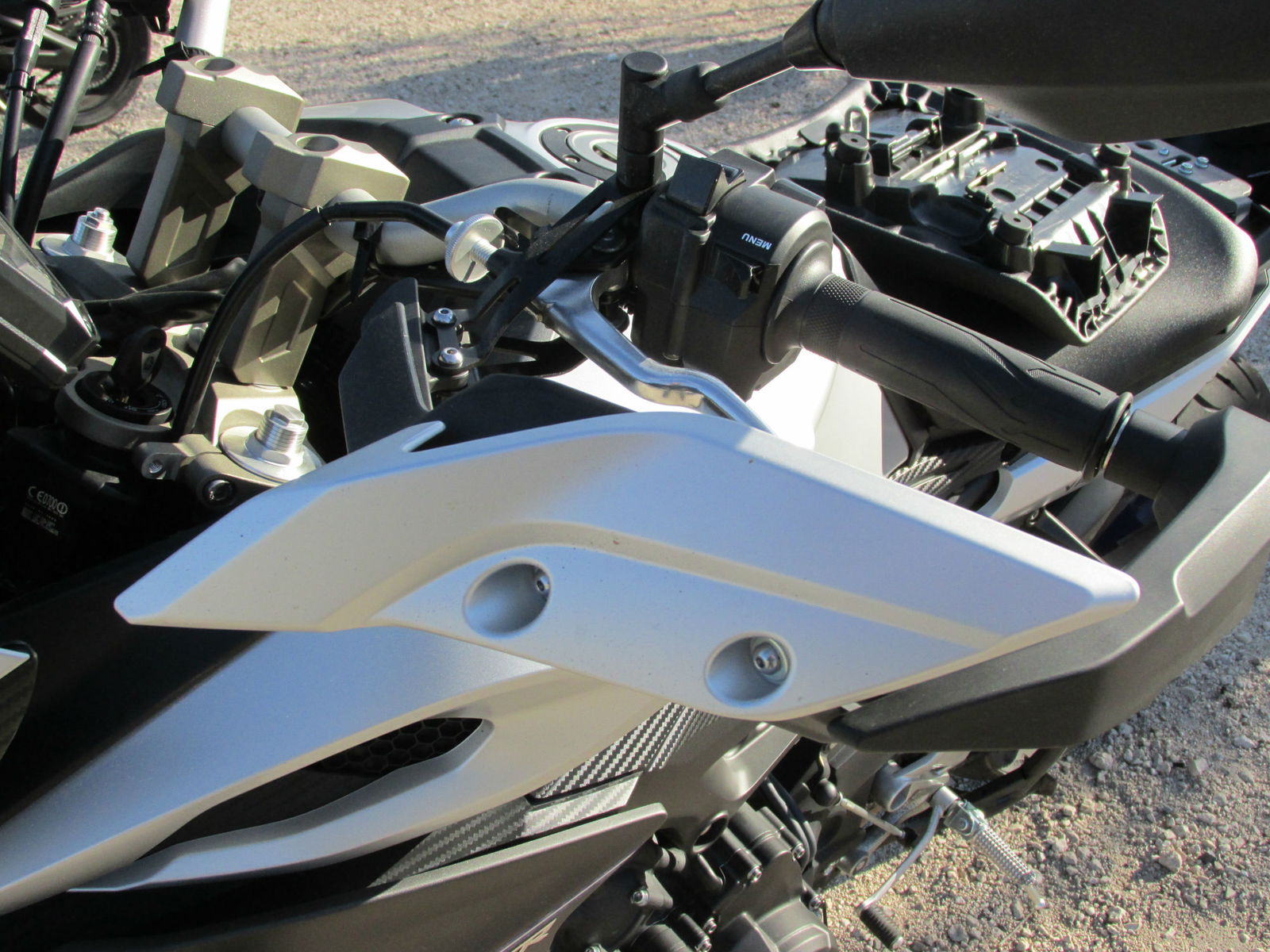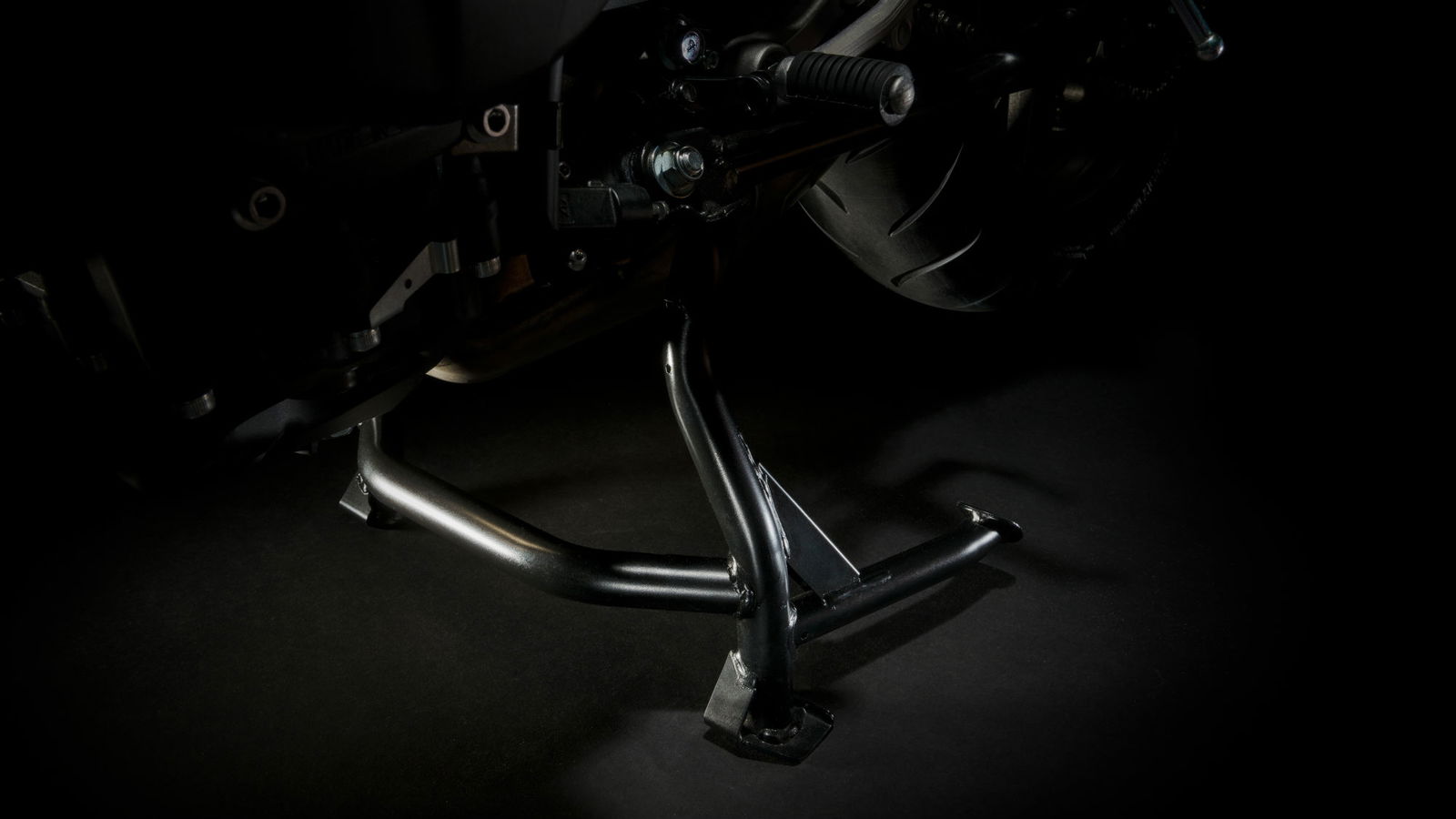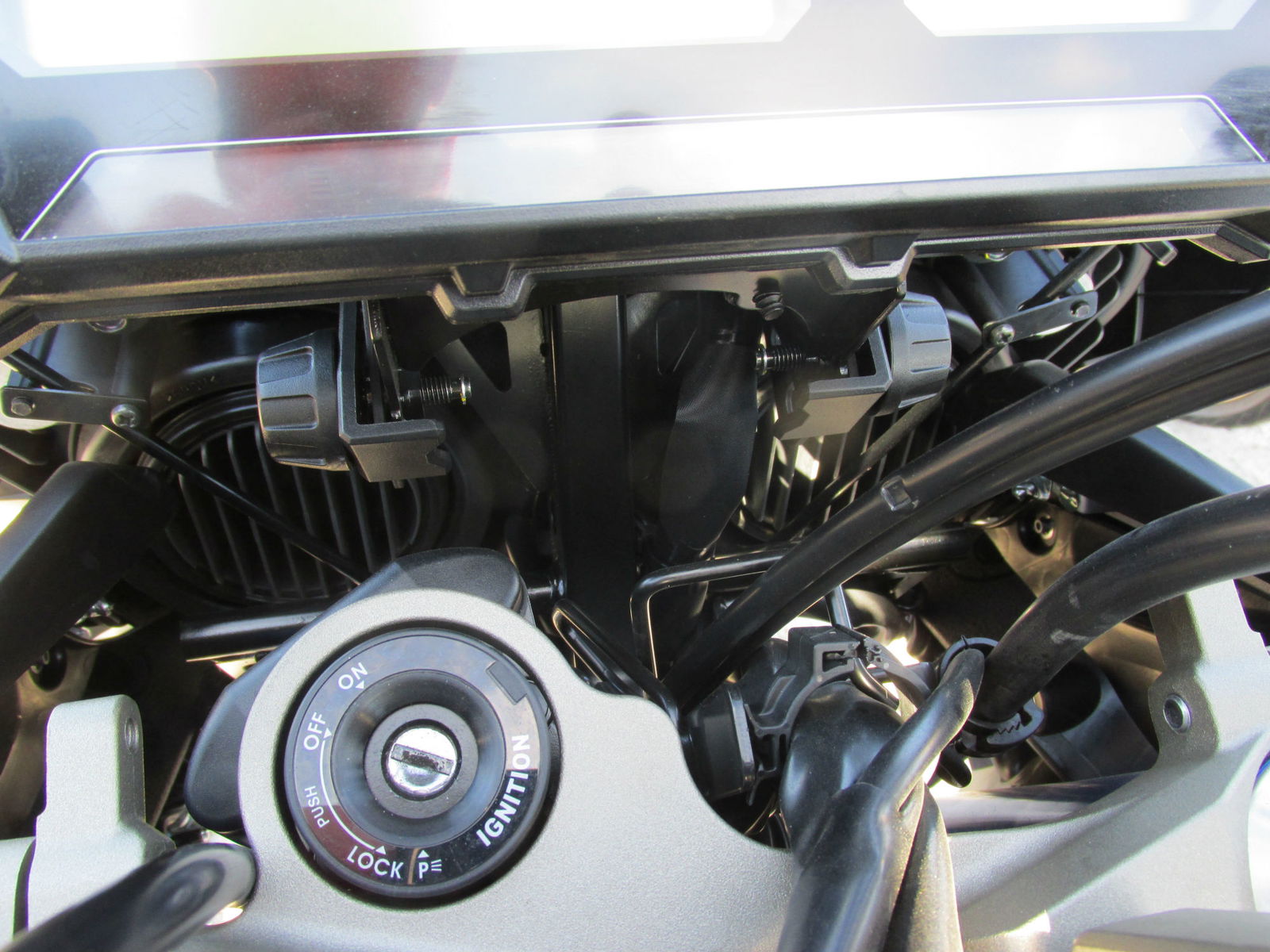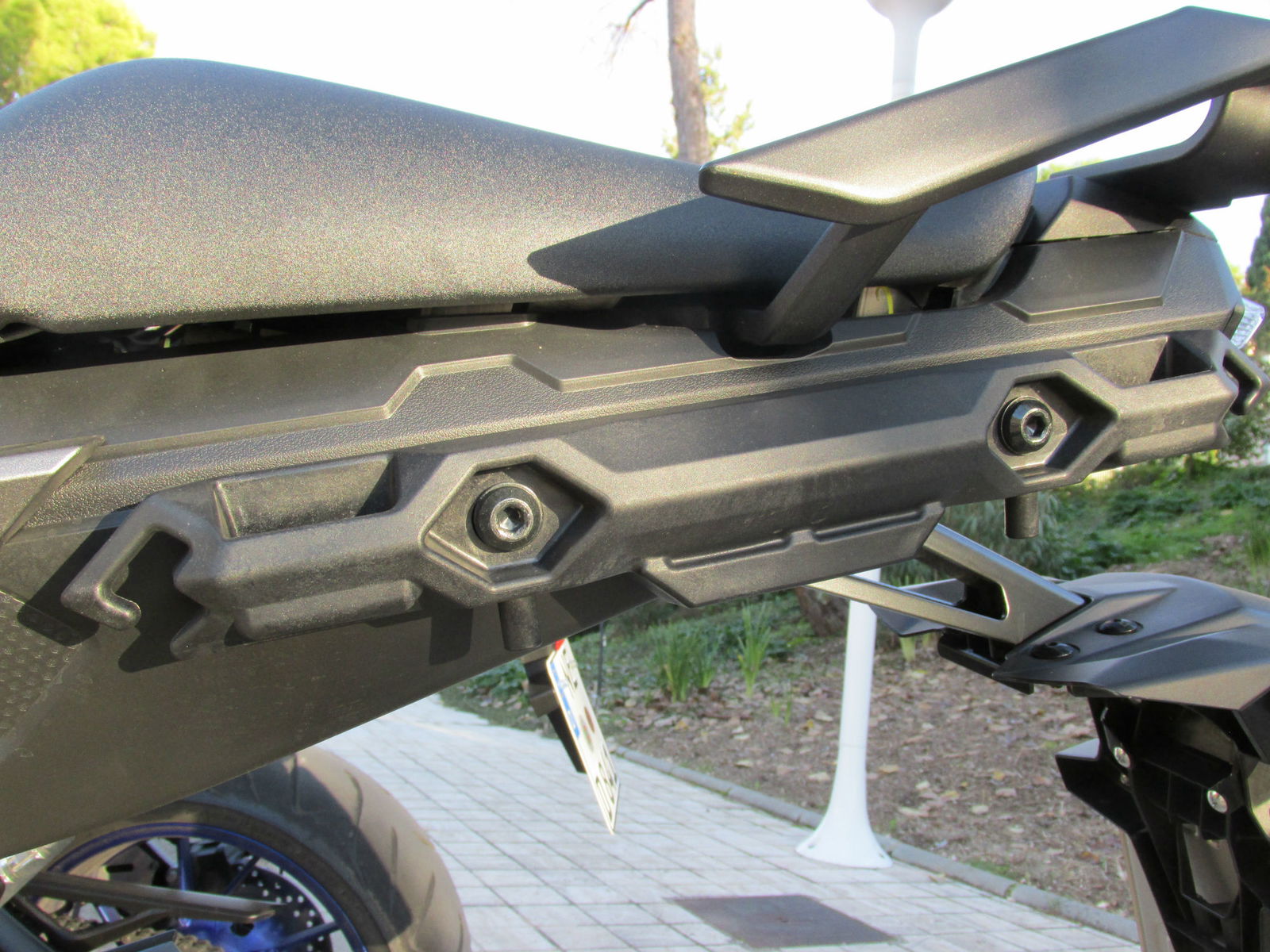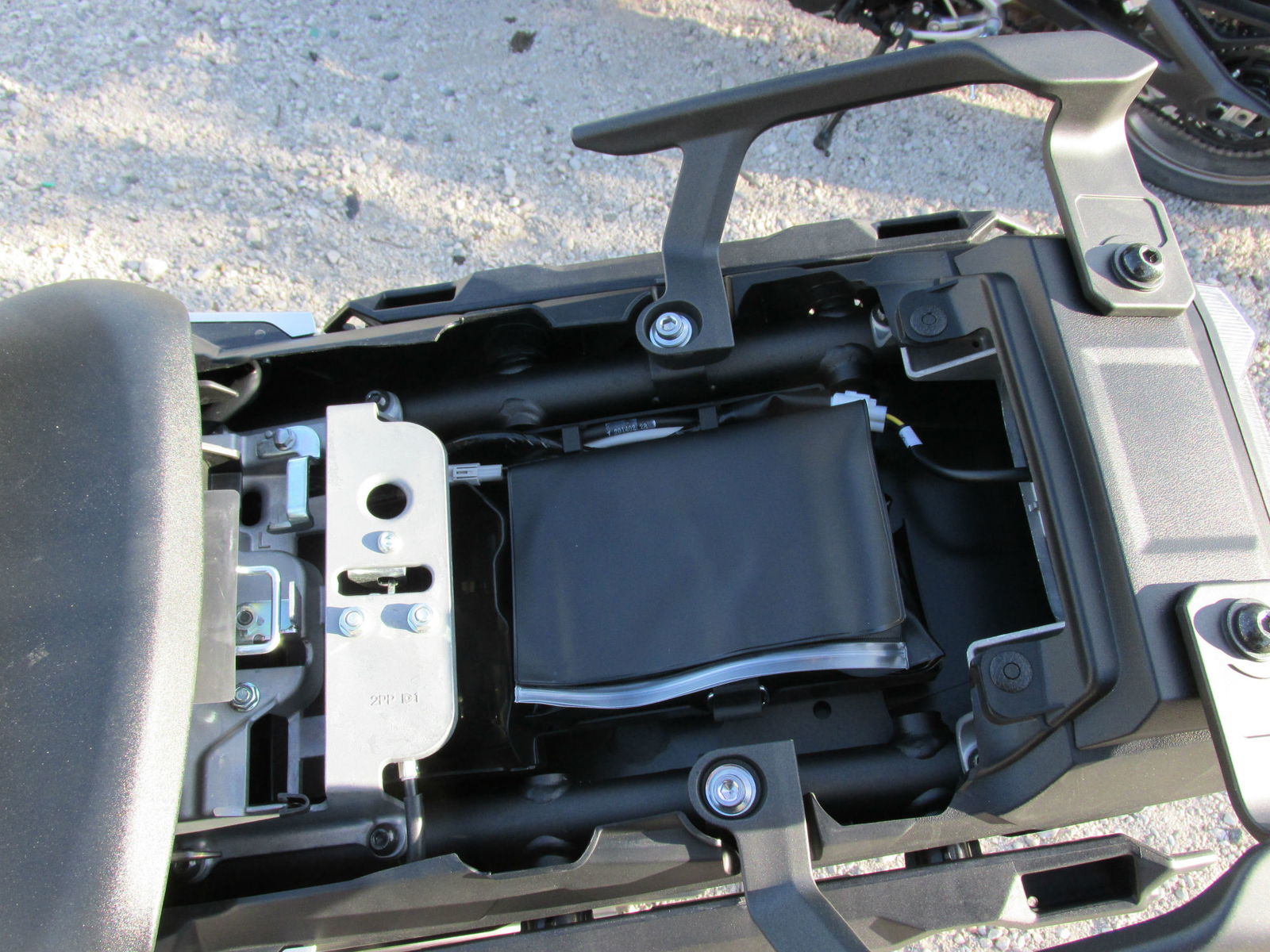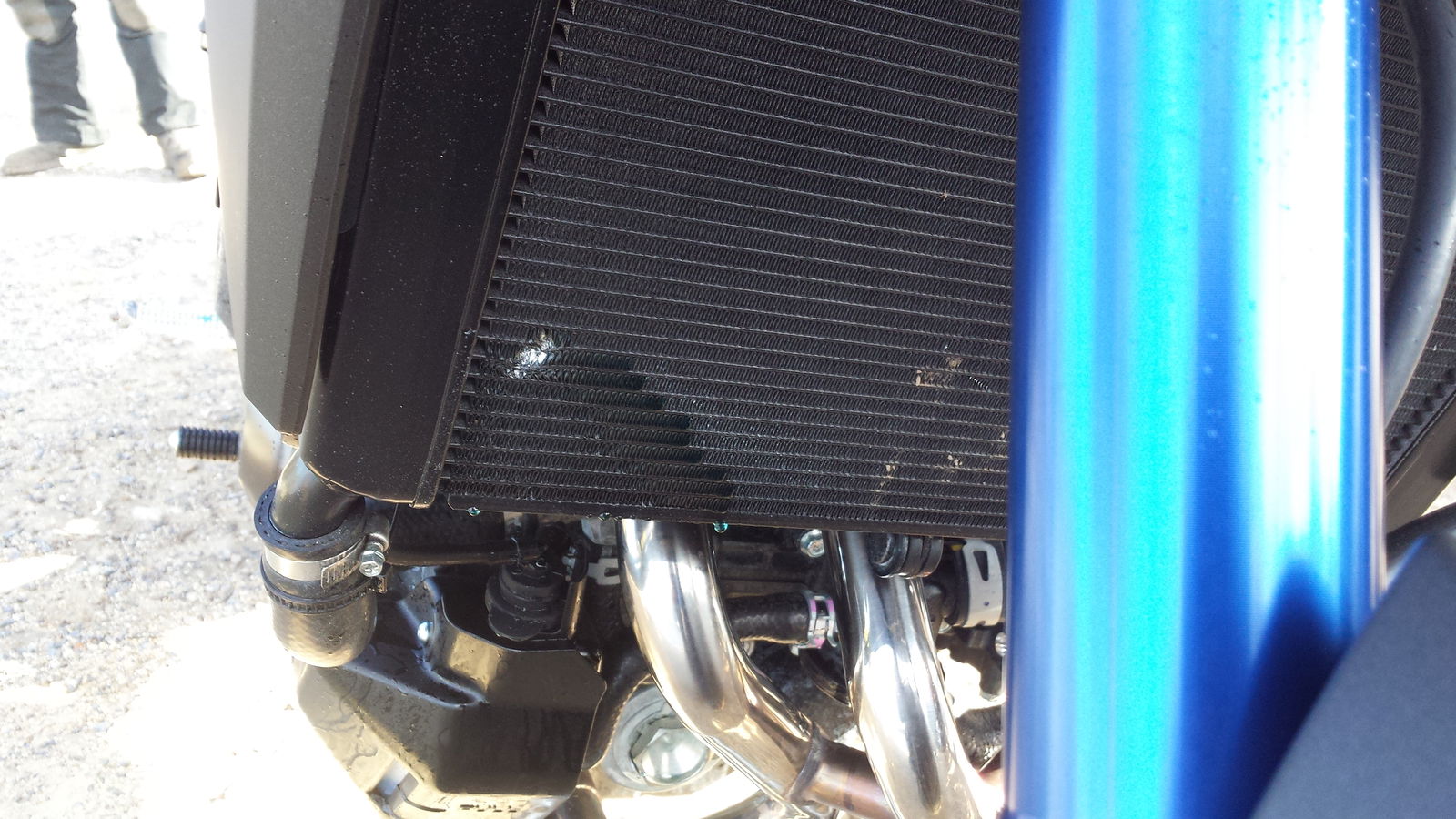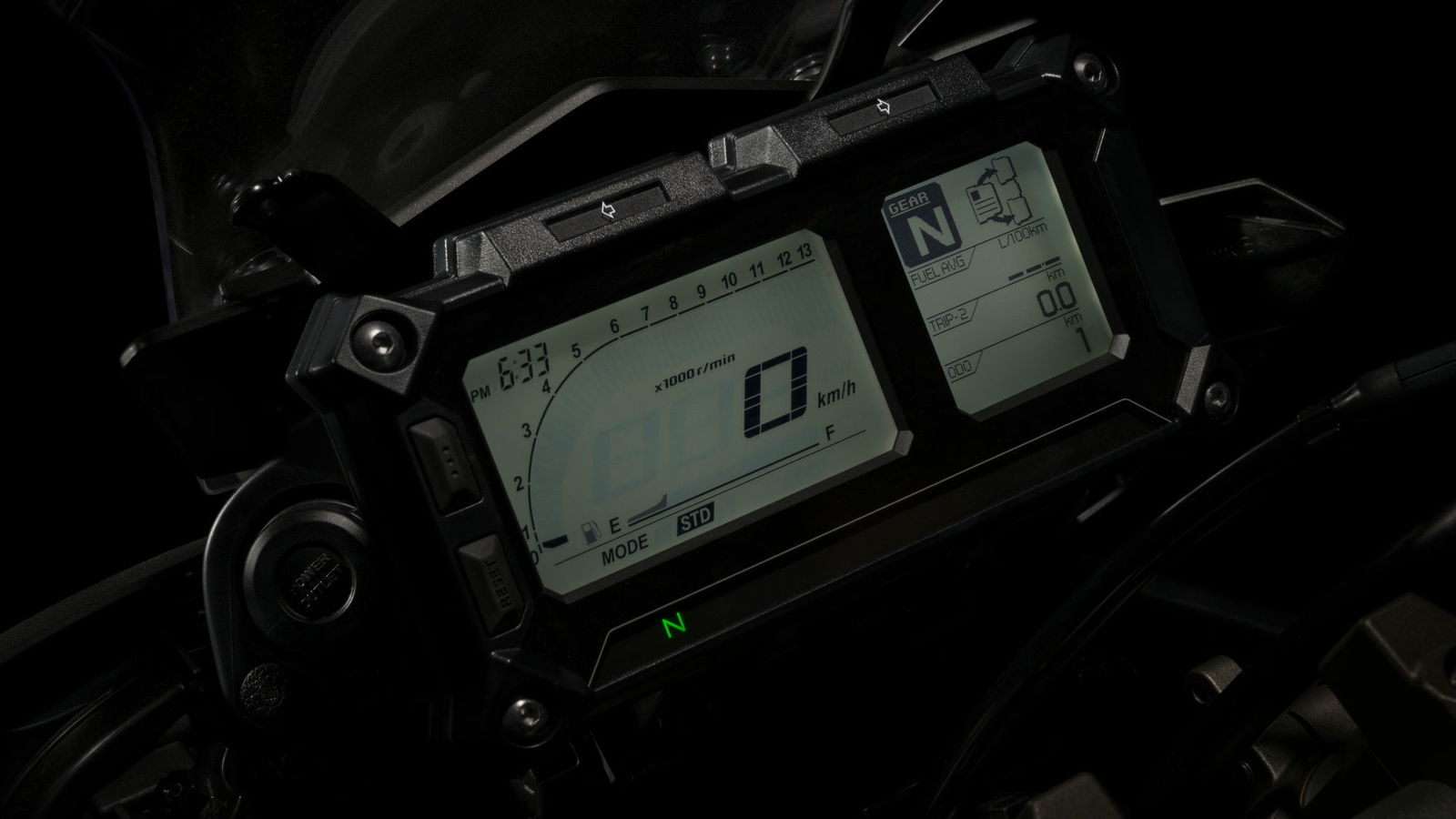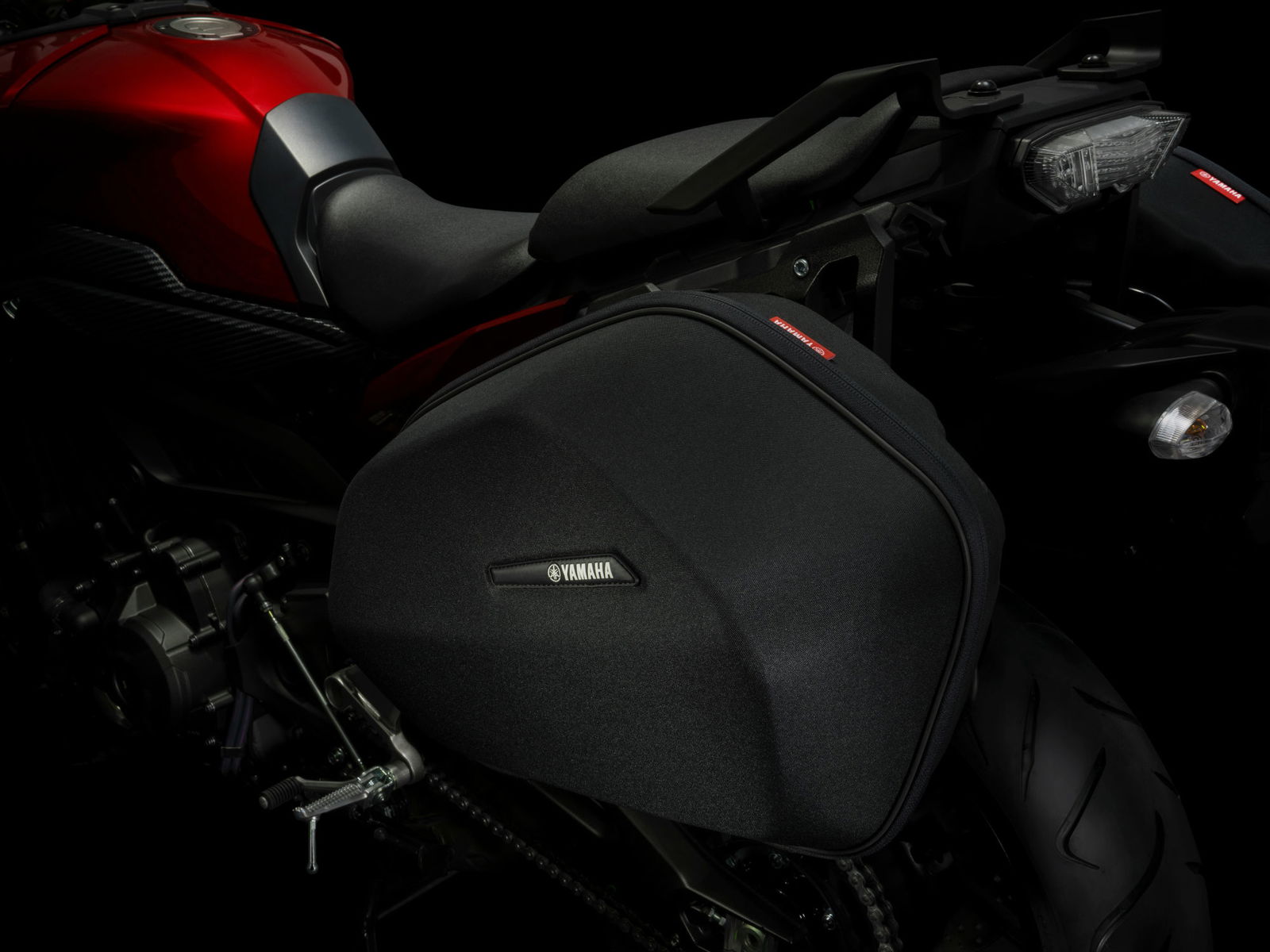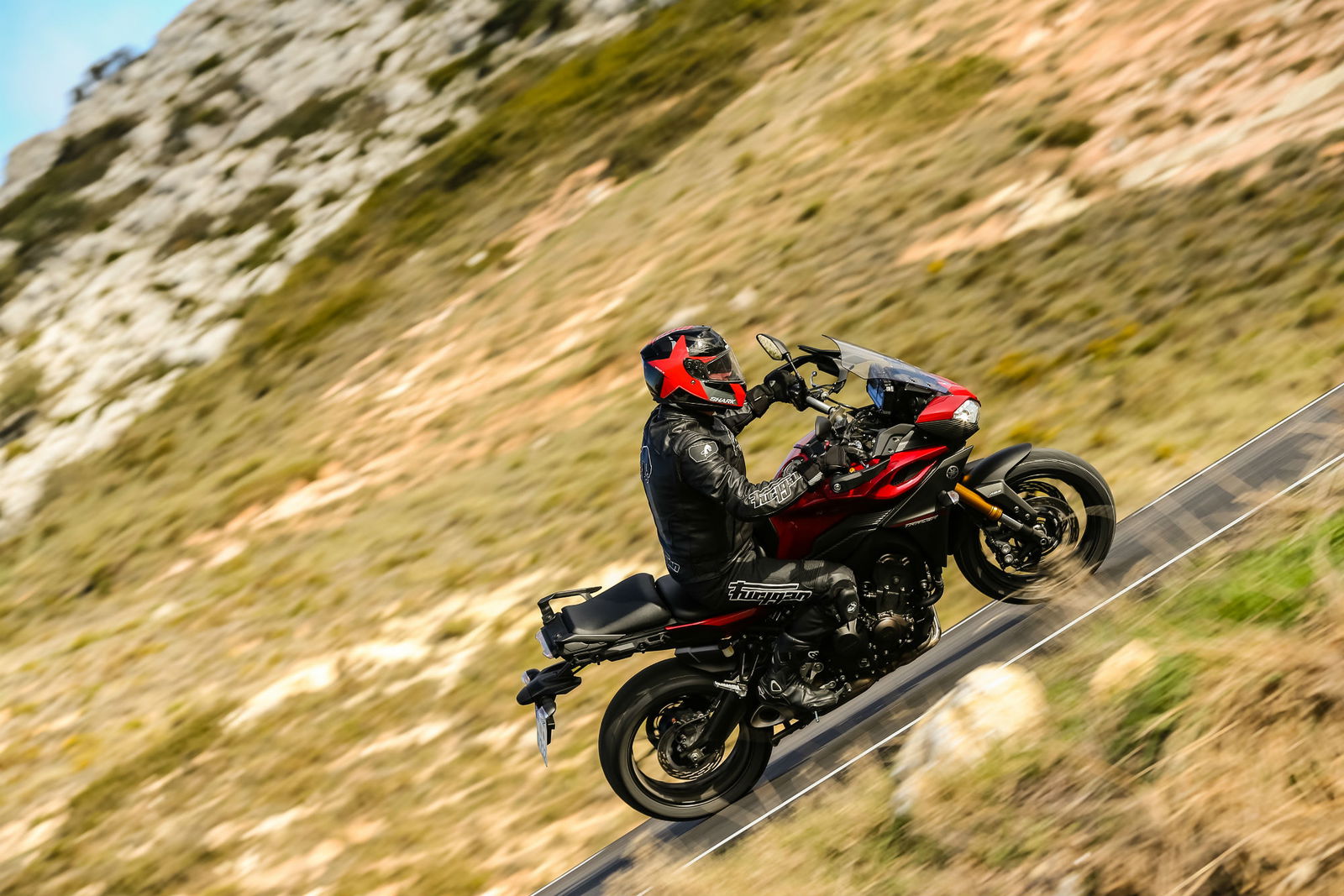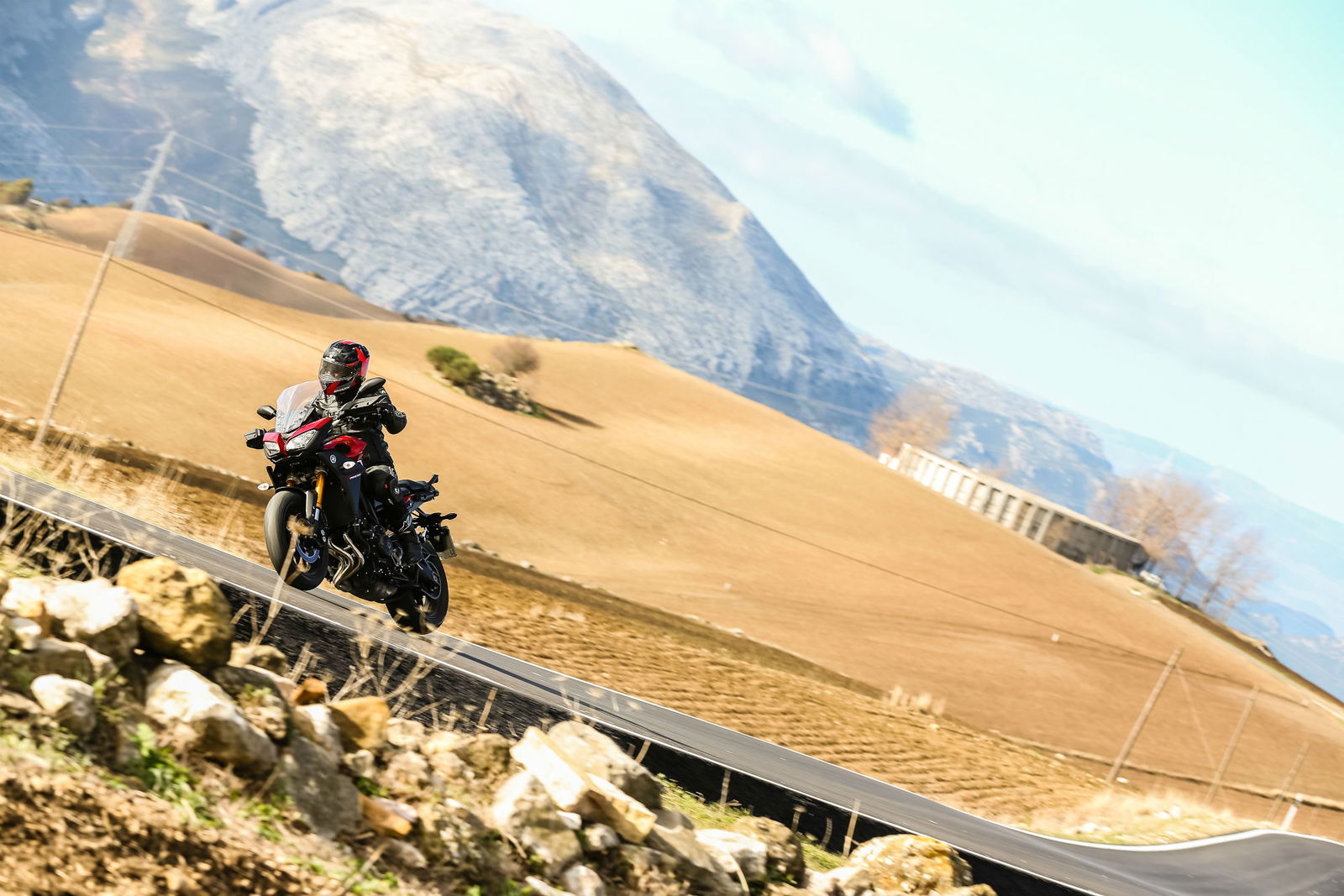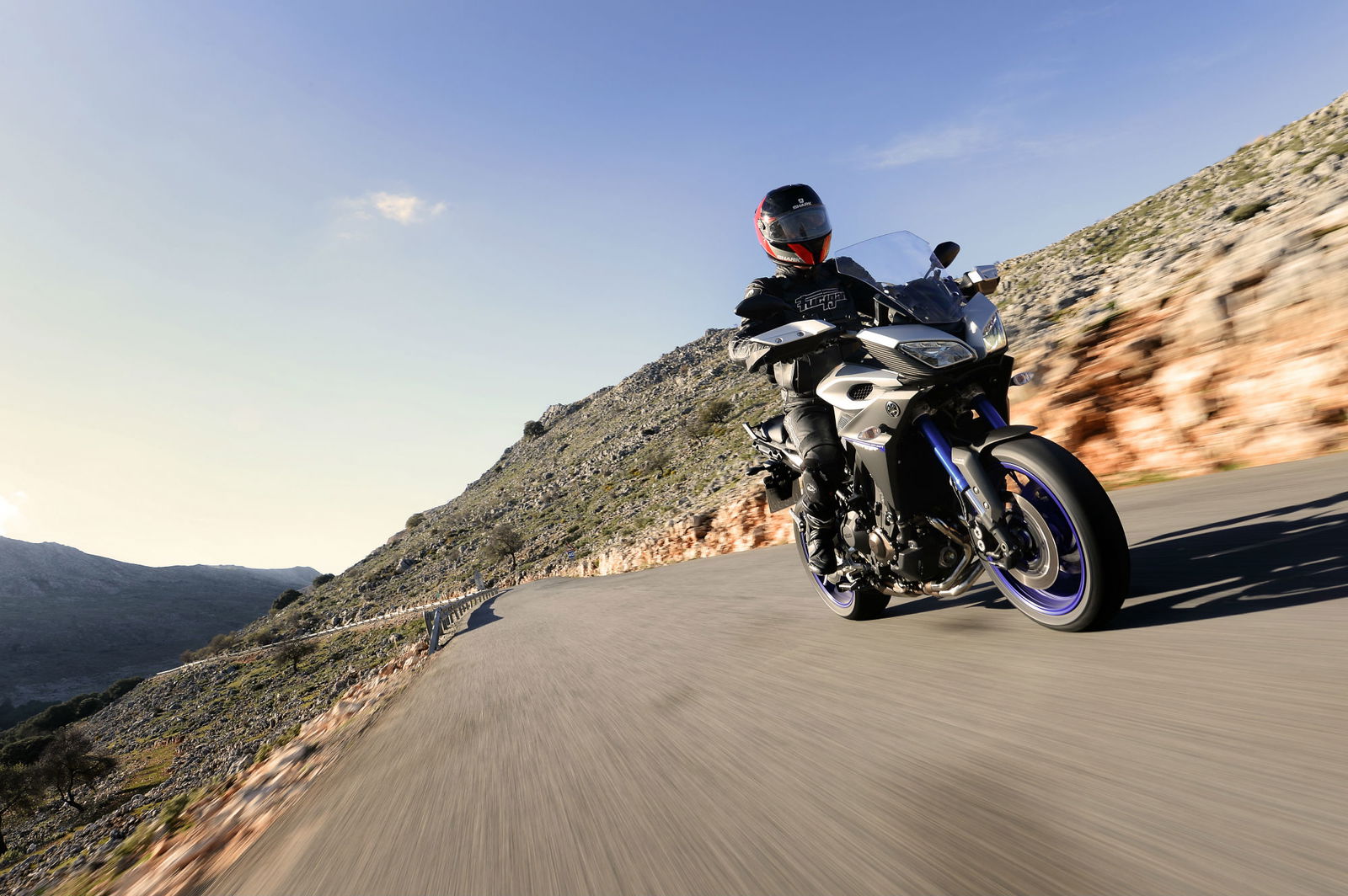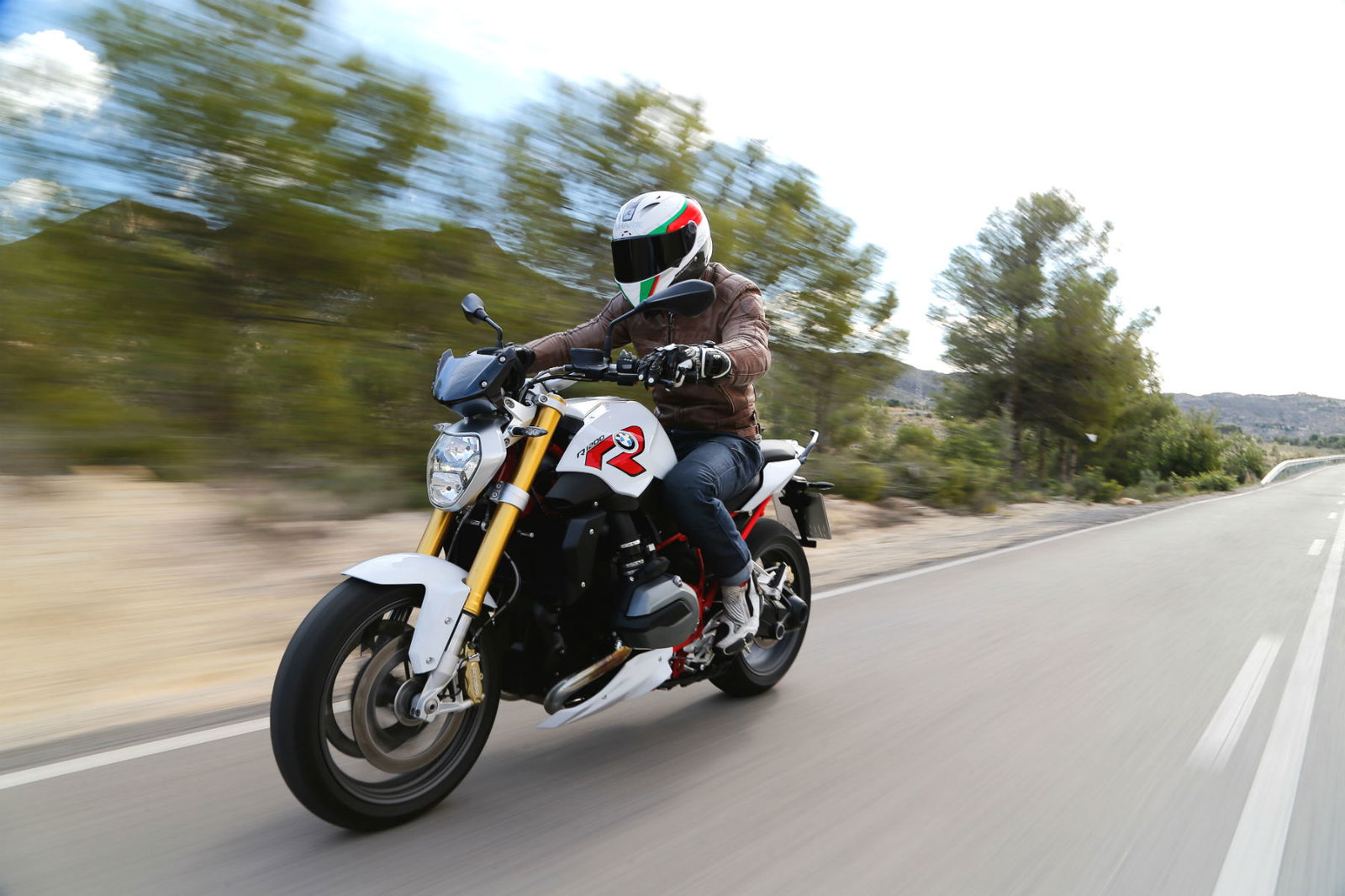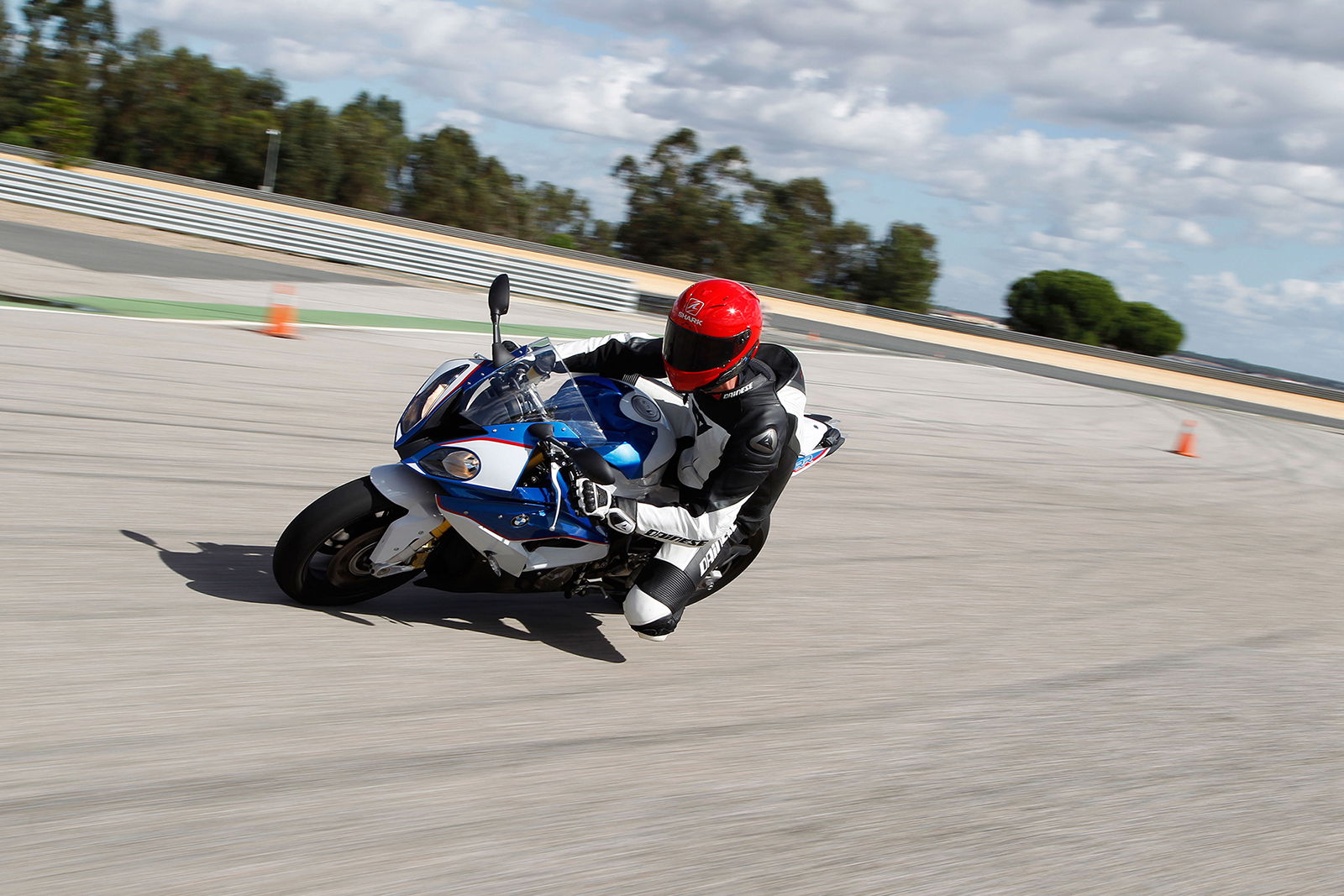First ride: Yamaha MT-09 Tracer review
Never mind the 'Dark Side of Japan', Yamaha's MT slogan should be ´better and cheaper than the competition´

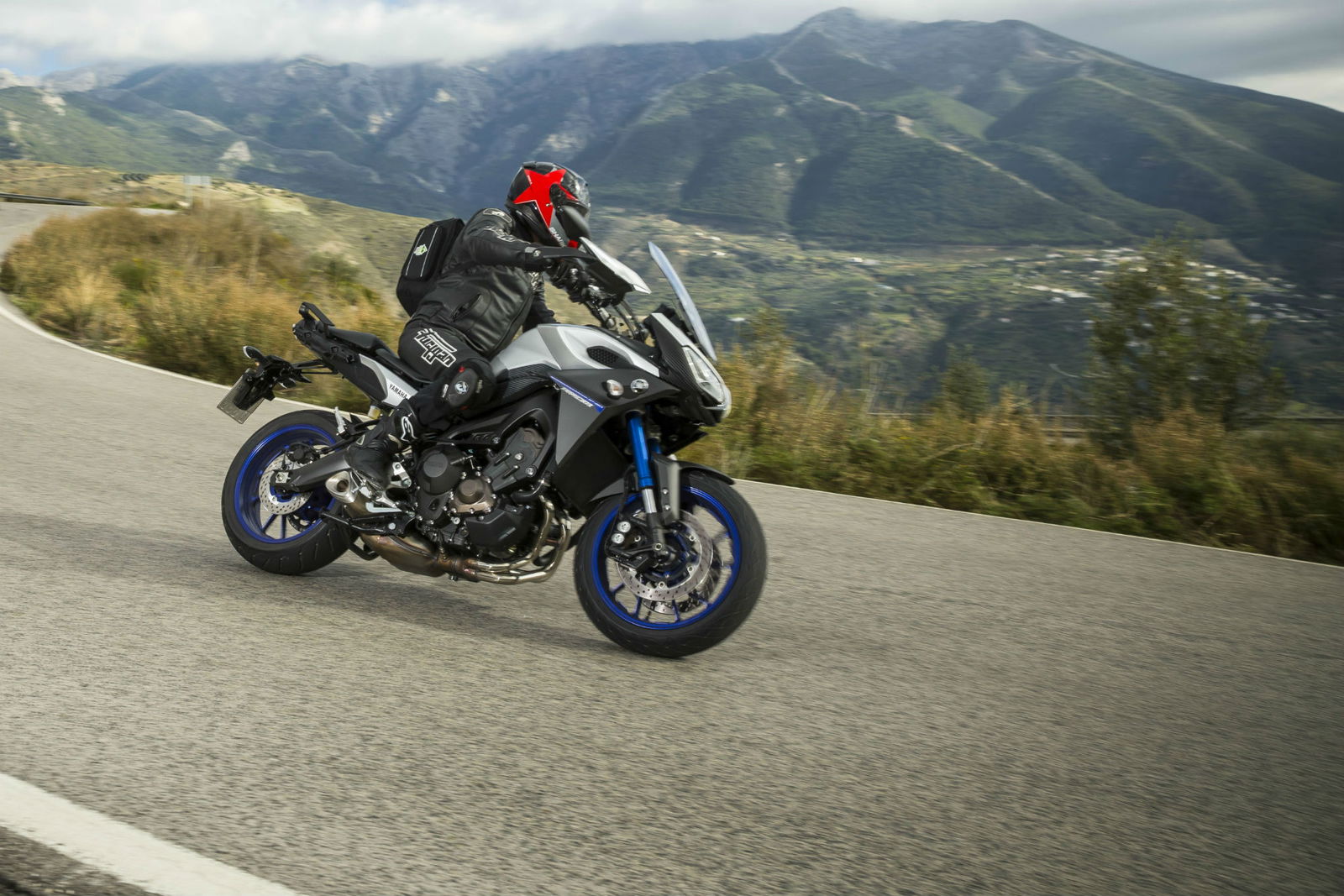
YOU don't need a 240kg motorcycle to go touring. Yamaha's new MT-09 Tracer is proof of it.
At a claimed 190kg dry, it's barely heavier than a middleweight but comfortable and roomy enough to cross continents with a pillion and a load of luggage.
It's the sports touring edition of the naked MT-09, which has proved hugely successful for Yamaha, becoming the third best-selling bike in Europe with over 10,000 shifted in its first year of production. It's behind only its smaller sibling, the MT-07, and the unassailable sales phenomenon that is the BMW R1200GS.
With figures like that, Yamaha could have been sure of selling a few thousand more just by putting a fairing and tall screen on it.
But the Tracer is more than that. It's got a new riding position. Where the MT-09's seat height is 815mm, the Tracer's is 845mm adjustable to 860mm. It's also been moved forward.
The bar's are slightly wider, higher and closer to you, and adjustable forward and aft by 10mm. It's a natural-feeling riding position, upright, with a short reach to the bars. The screen can be raised or lowered by 30mm.
It's got a bigger tank, at 18 litres to the MT-09's 14. With a claimed fuel economy of 53.6mpg, that gives it a range of over 180 miles.
It keeps the MT-09's 847cc triple engine, making 115hp and 64.5lbft. According to Yamaha that gives it a better power-to-weight ratio than the Ducati Hyperstrada, Triumph Tiger Sport, Kawasaki Versys 1000, Suzuki V-Strom 1000 and Honda Crossrunner.
It's a highly tractable engine, which, typically of triples, gives a versatile combination of useable mid-range and top-end rush.
It lets you be lazy, staying in one gear but still making good, smooth progress on twisty, winding tarmac. Leave it in third and it will pull you out of hairpins with reasonable urgency from 4,000rpm. Power builds with smooth, gathering intensity, and a crisp howl, to that top-end rush from about 8,000 or 9,000rpm. Peak torque is at 8,500, peak power at 10,000, and at 11,500 lives the rev-limiter.
It's gained traction control which can be switched off, and comes with ABS as standard, which cannot.
It's got a different fuel map to the MT-09 and a choice of three riding modes – 'A', 'B' and 'Standard'.
'A' gives an aggressive throttle response, 'B' laid back and 'Standard' somewhere in the middle. Switching modes is simple. You just close the throttle and thumb the 'Mode' button on the right bar. No need to pull in the clutch, as on some machines. Whatever mode you choose, it will revert to 'Standard' when you switch off the ignition though. Why can't modern electronics be told just once?
Close and open the throttle at low speed and the response can be a little snatchy. It's especially true of 'A', which just becomes annoying at low speed (admittedly not what it's intended for), but it's also the case to a lesser extend in 'Standard'. A gentle throttle hand deals with it.
The traction control didn't seem particular keen to intrude. On the launch ride in Malaga today, which included twisty minor roads, some not very well surfaced, at least twice the rear slid sideways under power in corners, with no sign of electronic intervention.
Brakes consist of twin 298mm front discs with radial mounted four-pot calipers and a single 245mm rear disc with a single-pot caliper. The front is superb, with masses of power, enough for one-finger braking, but also a reassuringly precise feel of progressive, growing force as you increase the pressure. The ABS seems sophisticated, coping with rough and rippled surfaces that would have some more basic systems simply denying you of brakes.
The 130mm progressive link shock and 41mm upside-down forks have more preload and damping than the MT-09 according to Yamaha. They were plush enough to make comfortable touring from some pretty shoddy surfaces. I was perfectly happy on the firm seat all day.
But they also retained a good degree of composure on the fastest bends and dips and bumps, and all three at once, whether on the brakes or gas.
Like the MT-09, the Tracer has a 17-inch front wheel. It might have a vaguely adventure-esque look but there's no pretence of off-road potential here, and it's sharper handling on the road for it.
It feels relatively agile and quick-steering, helped by its low weight, that front wheel, and the wide bars.
Adjusting things is easy. Lowering the seat (which I did immediately, because I'm 5'9”), is a quick and tool-free operation. It put me comfortably on the balls of my feet.
Raising the screen is a two-handed procedure involving the loosening and tightening of two knobs, and again no tools. You'll have to stop to do it but not for long. At the highest level, I had wind protection up to my neck.
The Tracer also has an LED headlight which can be height-adjusted without tools.
There are more concessions to touring, all standard equipment. You get a 12-volt power socket, sizeable hand-guards and a centre-stand.
The pillion seat is large and comfortable looking and at either side are four places to hook bungee cords.
Options include a lowering kit taking the rider's seat to the same height as the MT-09's, a rack, spot lights, heated grips and a full Akrapovic exhaust.
The 'sof-hard' zip-up panniers are optional but the Tracer comes equipped with the mounting points for them, which have a bare, functional look, managing to retain some of the aggressive attitude the MT range aims for.
It's a combination of the attitude and performance that has made the MT-09 a success with genuine two-up touring capability and comfort which should ensure the Tracer's popularity too.
Shan Miyazawa, Yamaha's product manager, had an interesting way of putting it in the presentation before the ride: 'Your wife will be easier and a little more supporting when you try to switch your bike to an MT-09 Tracer.'
But you'll still be on an MT when you go out with your mates.
Yamaha's economy and range claims seemed plausible at the end of our ride. The digital dash on my bike had 16 miles on the low-fuel trip-meter after a 158-mile ride. Among other things, the clocks can also tell you your trip duration and the ambient temperature, and the information is fairly easy to navigate through using up-down buttons on the left bar.
I've left perhaps the strongest argument for the Tracer till last. Again in line with the MT range, it's pretty cheap – starting from £8,149 plus on-the-road charges. That's £1,500 less than Kawasaki's ABS-equipped Z1000SX. It's nearly £5,000 less than Ducati's Multistrada.
Okay, so those are more powerful machines. Suzuki's V-Strom 1000 isn't and still costs more, at £9,999. Kawasaki's new-for-2015 Versys 1000 is barely any more powerful, at 120hp, and costs £9,749. Honda's Crossrunner makes less power than the Tracer, at 106hp, and costs two grand more, at £10,299.
Triumph's recently launched Tiger 800 makes significantly less power, at 95hp, and costs from £8,499 on the road.
Aggressive pricing has been part of Yamaha's MT strategy and it's had an impact across the market. After the MT-07 was introduced at just over £5,000, Kawasaki and Suzuki slashed the prices of the ER-6f and SFV650 Gladius.
The MT-09 Tracer could have a similar impact on its competition. It's good enough and cheap enough to warrant it.
WATCH OUR YAMAHA MT-09 TRACER VIDEO REVIEW
Model tested: Yamaha MT-09 Tracer
Price: £8,149 on-the-road
Engine: 847cc triple
Power: 115hp @ 10,000rpm
Torque: 64.5lbft @ 8,500rpm
Dry weight: 190kg (210kg wet)
Fuel economy: 53.6mpg (claimed)
Tank capacity: 18 litres
Seat height: 845mm-860mm
Availability: Mid-February 2015
Colours: Matt grey, red, silver/blue
Sign up for Visordown's weekly newsletter, Bugsplat, to get the best motorcycle news, road tests and features plus exclusive competitions and offers direct to your inbox. Register as a Visordown member here and tick the box for Bugsplat in your newsletter settings here.
